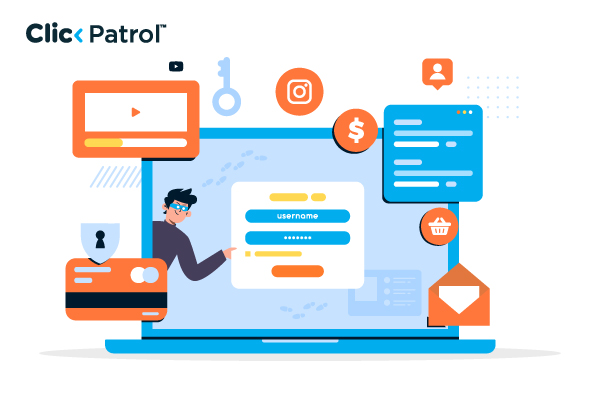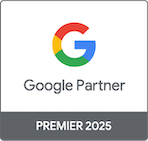
CPA Google Ads: How to lower your cost-per-acquisition and improve Ad ROI
Abisola Tanzako | Aug 20, 2025

Table of Contents
- What is CPA in Google Ads?
- Importance of CPA Google Ads
- What is target CPA bidding?
- How to set a realistic target CPA
- How CPA compares to other Google Ads bidding strategies
- Manual CPC (Cost Per Click):
- Maximize clicks:
- Maximize conversions:
- Target CPA (Cost Per Acquisition):
- Target ROAS (Return on Ad Spend):
- Proven strategies to lower CPA in Google Ads
- Top CPA mistakes (And how to fix them)
- Tools to track and analyze CPA effectively
- Making CPA work for you
- FAQs
WordStream says the average CPA across Google Ads industries for search campaigns is $48.96. In the competitive world of online advertising, every dollar counts.
CPA Google Ads is a performance marketing metric that helps you understand how much you pay to acquire a customer.
But it is more than just a number; it is a tool to sharpen your targeting, stretch your budget, and boost return on investment (ROI).
In this article, you will learn how CPA works, how to set realistic targets, compare bidding strategies, and use tools to lower acquisition costs.
What is CPA in Google Ads?
Cost Per Acquisition (CPA) is the average amount you pay to generate a conversion through your ad campaign.
A conversion can be anything meaningful to your business: a purchase, form submission, signup, phone call, or app install.
In Google Ads, CPA is calculated using the formula:
CPA = Total Cost ÷ Total Conversions
If you spend $500 and get 25 conversions, your CPA is $20. It is important to note that CPA differs from CPC (Cost Per Click).
While CPC focuses on how much you pay per ad click, CPA zooms in on the cost per actual result.
CPA is often considered a more meaningful metric for ROI-driven advertisers.
Importance of CPA Google Ads
Focusing on CPA instead of just traffic or impressions helps you tie your ad spend to real business outcomes.
It answers, “How much am I paying to get a paying customer or lead?” Some benefits of optimizing for CPA:
- Budget efficiency: Know exactly how much each conversion costs, so you do not overspend.
- ROI tracking: A low CPA and high customer lifetime value (CLV) = profit.
- Scalability: Once you hit a profitable CPA, you can increase spend confidently.
- Better goal alignment: Beneficial for lead gen, e-commerce, and app installs.
What is target CPA bidding?
Target CPA is a smart bidding strategy in Google Ads in which you set a desired cost per conversion, and Google automatically adjusts your bids in real time to meet that target.
Example: You tell Google you want to pay $15 per lead.
Google’s machine learning will then analyze your historical data, predict which auctions will most likely convert at or below $15, and increase or decrease bids accordingly.
Key features of target CPA bidding:
- Automated optimization: Takes manual guesswork out of bidding.
- Real-time adjustments: Bids are adjusted in real-time based on context (device, location, time, etc.).
- Data-driven: Performs best when at least 30 conversions in the last 30 days.
How to set a realistic target CPA
Your target CPA should be realistic and based on your performance data to avoid overspending or undershooting. Here’s how to approach it:
1. Review historical CPA data: Look at your account’s average CPA over the past 30–90 days. Use this as your benchmark.
2. Understand customer lifetime value (CLV): If your average customer spends $500 over time, you might tolerate a higher CPA (e.g., $100) than your CLV is $50.
3. Factor in gross margins: Your CPA target should still leave room for profit. If your product has a 50% margin, your CPA should be below 50% of your average order value.
4. Segment by campaign goals: You may set different CPA targets for brand campaigns vs. retargeting campaigns. Be strategic
How CPA compares to other Google Ads bidding strategies
Google Ads offers several bidding strategies, each suited for specific campaign goals.
Understanding how Target CPA compares to other options helps you choose the most effective one for your objectives:
Manual CPC (Cost Per Click):
- Focus: Clicks
- Ideal for: Beginners or advertisers who want full control over bids
- Type: Manual bidding
- Best when: Gathering data or testing keywords individually
Maximize clicks:
- Focus: Driving as many clicks as possible within your budget
- Ideal for: Top-of-funnel awareness or site traffic goals
- Type: Smart bidding
- Best when: You want more website visits but aren’t optimizing for conversions yet
Maximize conversions:
- Focus: Getting the highest number of conversions for your budget
- Ideal for: Advertisers with limited data or broad performance goals
- Type: Smart bidding
- Best when: You do not have a specific CPA target but want volume
Target CPA (Cost Per Acquisition):
- Focus: Controlling the cost per conversion
- Ideal for: Lead generation, app installs, e-commerce
- Type: Smart bidding
- Best when: You know your profitable acquisition cost and want to scale efficiently
Target ROAS (Return on Ad Spend):
- Focus: Maximizing revenue vs. cost
- Ideal for: High-ticket e-commerce or businesses with varying product prices
- Type: Smart bidding
- Best when: You want to earn a specific return on every dollar spent.
Proven strategies to lower CPA in Google Ads
Even after setting your Target CPA, there’s always room to reduce your actual CPA further.
Lowering your cost per acquisition allows you to drive more conversions with the same budget, ultimately increasing your profitability.
Here’s how to continuously improve your CPA:
1. Refine audience and keyword targeting
- Analyze your audience segments and keyword reports.
- Remove poor performers and expand successful ones.
- Use “in-market” and “custom intent” audiences for more qualified clicks.
2. Run A/B tests on Ad creatives
- Split test headlines, CTAs, and visuals.
- Strong creatives improve Quality Score, reduce CPC, and boost conversions.
3. Optimize landing pages for conversion
- Make forms simpler and faster to fill out.
- Add trust signals like reviews, testimonials, and security badges.
- Run A/B tests to improve headlines and layout.
4. Use negative keywords and placement exclusions
- Prevent spending on irrelevant or low-quality traffic.
- Regularly update your negative keyword list and check placements on Display and YouTube.
5. Adjust your attribution model
- Move away from “last-click” attribution if it undervalues upper-funnel keywords.
- Use “data-driven” or “position-based” models to more accurately inform bidding.
6. Monitor and adjust bids regularly
- Don’t “set and forget.” Even automated bidding benefits from human review.
- Let campaigns run long enough to gather data before making changes (usually 7–14 days).
Top CPA mistakes (And how to fix them)
They include:
1. Setting unrealistically low CPA targets: If your average CPA is $60, setting a Target CPA of $10 will not work; it will likely throttle impressions or attract low-quality traffic.
2. Using target CPA too early: Google’s algorithm will struggle if you do not have enough conversion data. Start with Maximize Conversions or Manual CPC.
3. Ignoring Landing Page Experience: Even perfect ad targeting can’t fix a slow, confusing, or untrustworthy landing page.
4. Failing to segment campaigns: Using a single CPA target across different funnel stages or products can distort performance. Tailor CPA by campaign type.
5. Frequent edits: When you tweak your campaign, Google’s algorithm resets the learning phase. Let changes settle for a few days before judging results.
Tools to track and analyze CPA effectively
To effectively manage CPA, you need the right tools and reports. Here’s what helps:
- Google Ads dashboard: Monitor conversion volume, cost, and CPA per campaign/ad group.
- Google Analytics 4 (GA4): Track assisted conversions and user journeys across touchpoints.
- Looker Studio (formerly Data Studio): Build custom CPA reports for clients or internal tracking.
- CRM integration: Push offline conversions (like phone calls or demos) back into Google Ads for more accurate CPA optimization.
- A/B testing tools: Use Google Optimize or similar tools to test landing page variations.
Making CPA work for you
Optimizing CPA in Google Ads is not just about setting a number and hoping the algorithm does the rest.
It is about constant improvement, smart targeting, creative testing, and measuring what truly matters.
CPA is more than just a cost metric; it is a health check for your advertising funnel.
If your CPA is low and conversions are high-quality, chances are your targeting, ad messaging, and landing experience are working in harmony.
But if your CPA is rising, it’s a warning bell. Use that insight to dig in, refine, and recalibrate.
Mastering CPA means mastering performance, and that’s the key to sustainable, profitable growth with Google Ads.
FAQs
Q. 1 What is the difference between CPA and CPC?
CPA (Cost Per Acquisition) measures the cost per conversion, while CPC (Cost Per Click) measures the cost per ad click. CPA is more conversion-focused.
Q. 2 Is Target CPA better than maximizing conversions?
It depends. Maximize Conversions aims for quantity without a cost ceiling, while Target CPA focuses on maintaining profitability.
Target CPA is more controlled, especially for ROI-focused campaigns.
Q. 3 How many conversions do I need before using the target CPA?
Google recommends at least 30 conversions in the last 30 days for the algorithm to optimize effectively.
Q. 4 What is a good CPA?
There is no universal number. A good CPA depends on your business model, profit margins, and customer lifetime value. A $50 CPA might be great for a $500 sale, but not for a $30 product.





